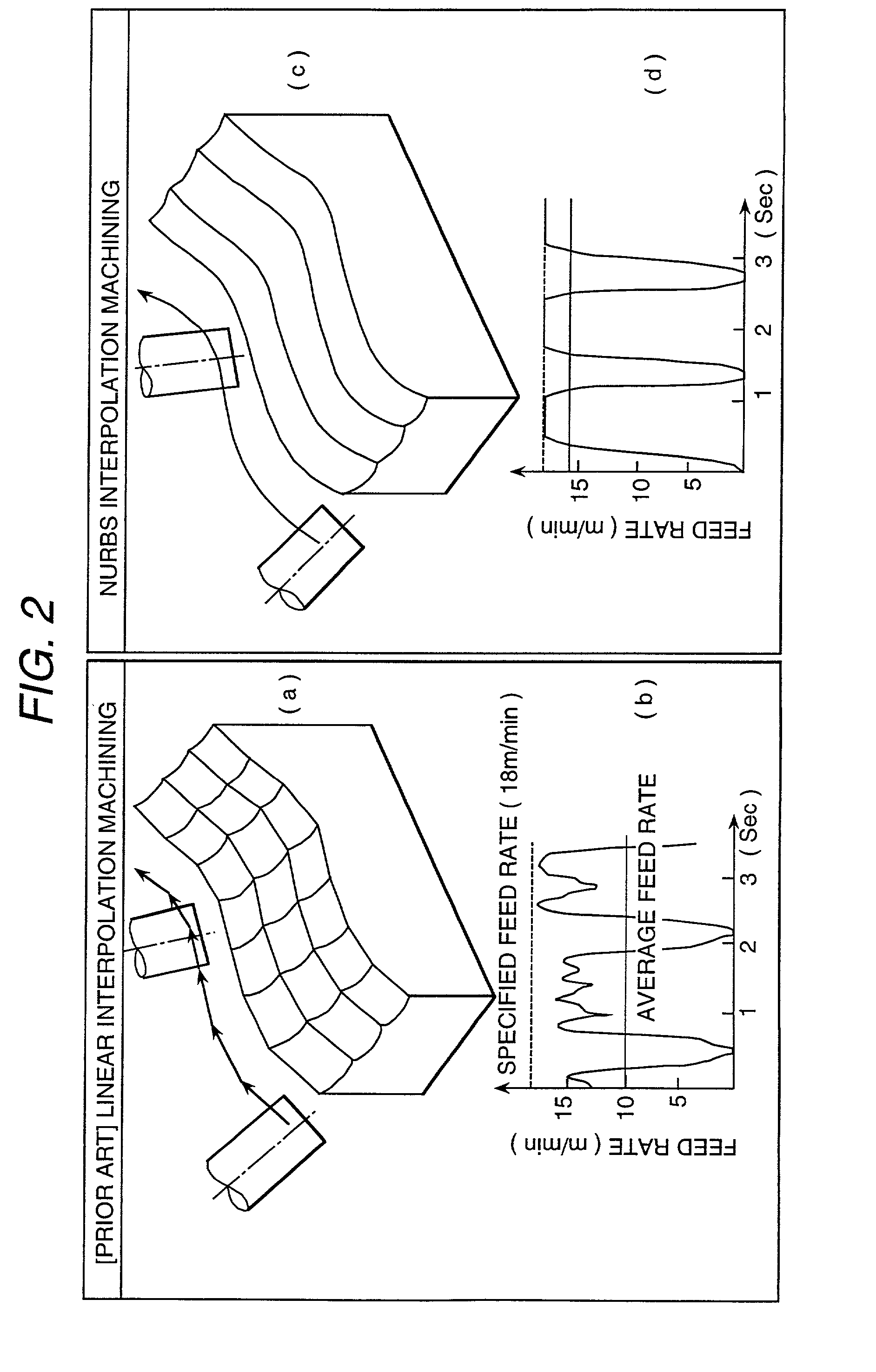Numerically controlled curved surface machining unit
a machining unit and numerical control technology, applied in the direction of program control, electric programme control, instruments, etc., can solve the problems of large amount of nc data at shorter pitches, poor roughness and a lot of hand-finishing steps, etc., to improve the accuracy of the machining surface. , the effect of improving the accuracy of the machining surfa
- Summary
- Abstract
- Description
- Claims
- Application Information
AI Technical Summary
Problems solved by technology
Method used
Image
Examples
Embodiment Construction
[0080] Preferred embodiments of a numerically controlled curved surface machining unit according to the present invention are described hereunder, using FIG. 1 through FIG. 17.
[0081] FIG. 1 is a block diagram showing the whole configuration of an embodiment of the numerically controlled curved surface machining unit according to the present invention. A host computer 10 stores the tool control point vector and tool axis vector calculated along the tool path on a coordinate system with defined curved shape (workpiece coordinate system) in an external file 11 as cutter location (CL) data.
[0082] In step 21, a computer 20 of the numerically controlled curved surface machining unit reads CL data from the external file 11. Instep 33, the computer reads set-up data necessary for NC data conversion, including machine shape data, cutting specification data, setting position data, from an external file 12.
[0083] There is always an error between the supposed tool length or tool diameter in pre...
PUM
 Login to View More
Login to View More Abstract
Description
Claims
Application Information
 Login to View More
Login to View More - R&D
- Intellectual Property
- Life Sciences
- Materials
- Tech Scout
- Unparalleled Data Quality
- Higher Quality Content
- 60% Fewer Hallucinations
Browse by: Latest US Patents, China's latest patents, Technical Efficacy Thesaurus, Application Domain, Technology Topic, Popular Technical Reports.
© 2025 PatSnap. All rights reserved.Legal|Privacy policy|Modern Slavery Act Transparency Statement|Sitemap|About US| Contact US: help@patsnap.com



